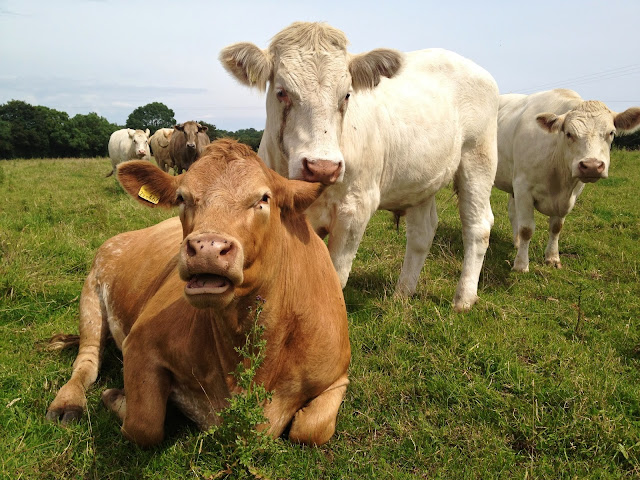 |
| Image: David Davies |
For pigs, only one possibility exists for regulating their core temperature; raising their respiratory rate considerably by panting. Chickens also use so-called open-beak breathing to cool down in high outdoor temperatures. In doing so, they can take up to 250 breaths per minute. The big disadvantage of panting is that the massive increase in oxygen absorption can also dramatically increase the oxygen-radical production in the organism. In doing so, the body’s own antioxidative defense system is activated; however, it is quickly pushed to its limits due to the level and duration of the stress caused.
The result is an overload of radicals, also known as the pathophysiological metabolic condition 'oxidative stress'. Oxidative stress is a catalyst for inflammation, output losses and a range of illnesses. With laying hens, for example, a surrounding temperature from 28°C upwards can already reduce feed intake by around 12 percent. Rising temperature and air humidity further reduce feed intake – with strong effects on performance: laying rates and egg weight virtually halve, the egg shells become thinner and the product quality is massively worsened.
 |
| Effect of temperature & air humidity on performance of milk cows (modified for NRS 1981) |
In numerous feeding trials, it could be shown: Anta®Ox from the health product line of Dr Eckel supports the body’s defense system and reduces oxidative stress, as it neutralises radicals, thus making them harmless. Inflammation, catalysed by oxidative stress, can likewise be reduced with Anta®Ox. Inflammatory reactions in the body cause heat production – this is absolutely unwanted in times of heat stress. Reducing inflammatory reactions has a resultant positive effect on the heat regulation of animals, because less bodily heat has to be emitted. Another pleasing side effect was detected in the trials with Anta®Ox: through the minimisation of oxidative stress and inflammatory reactions, not only was health promoted but the animals were also left with more energy for the maintenance of productive processes.
An average of 3.6kg more milk per day and per animal with Anta®Ox
Anta®Ox is also essential for milk cows: the temperature rises, and output falls. Heat stress and its consequences for animal health and milk production have been extensively researched for many years for the milk industry. A poorer quality of milk, output losses and illnesses to the point of animal deaths are the result of such periods of stress. This produces additional annual costs for the farmer from around €400 per cow (based on output losses and medical costs). In order to be able to estimate the heat stress for animals in a barn, there is the Temperature-Air Humidity Index.
 |
|
Milk production in first ten
lactation weeks after calving (Gessner et al, 2015)
|
Anta®Ox has impressively shown in feeding trials, that in extreme phases of stress, it can stabilise output and support animal health due to the fewer inflammatory reactions in the liver and intestine. In a feeding trial during a transit phase (conducted under elevated temperatures in the summer of 2013), it could also be observed that not only could animal health parameters be improved, but milk production was also significantly increased (+3.6kg per cow and per day) through the use of Anta®Ox.
Conclusion of the extensive trials: Anta®Ox has the properties required in order to support the animal health and to ensure the profitability of agricultural holdings – not only, but especially in the summer.
Have any questions on the effects of heat stress and the effectiveness of Anta®Ox?
Please contact Dr Eckel:
Monika Korzekwa
Technical Sales
Email: m.korzekwa@dr-eckel.de
Tel.: +49 - 2636-9749-28
Visit the Dr Eckel site HERE.
The Global Miller
This blog is maintained by The Global Miller staff and is supported by the magazine GFMT
which is published by Perendale Publishers Limited.
For additional daily news from milling around the world: global-milling.com


No comments:
Post a Comment